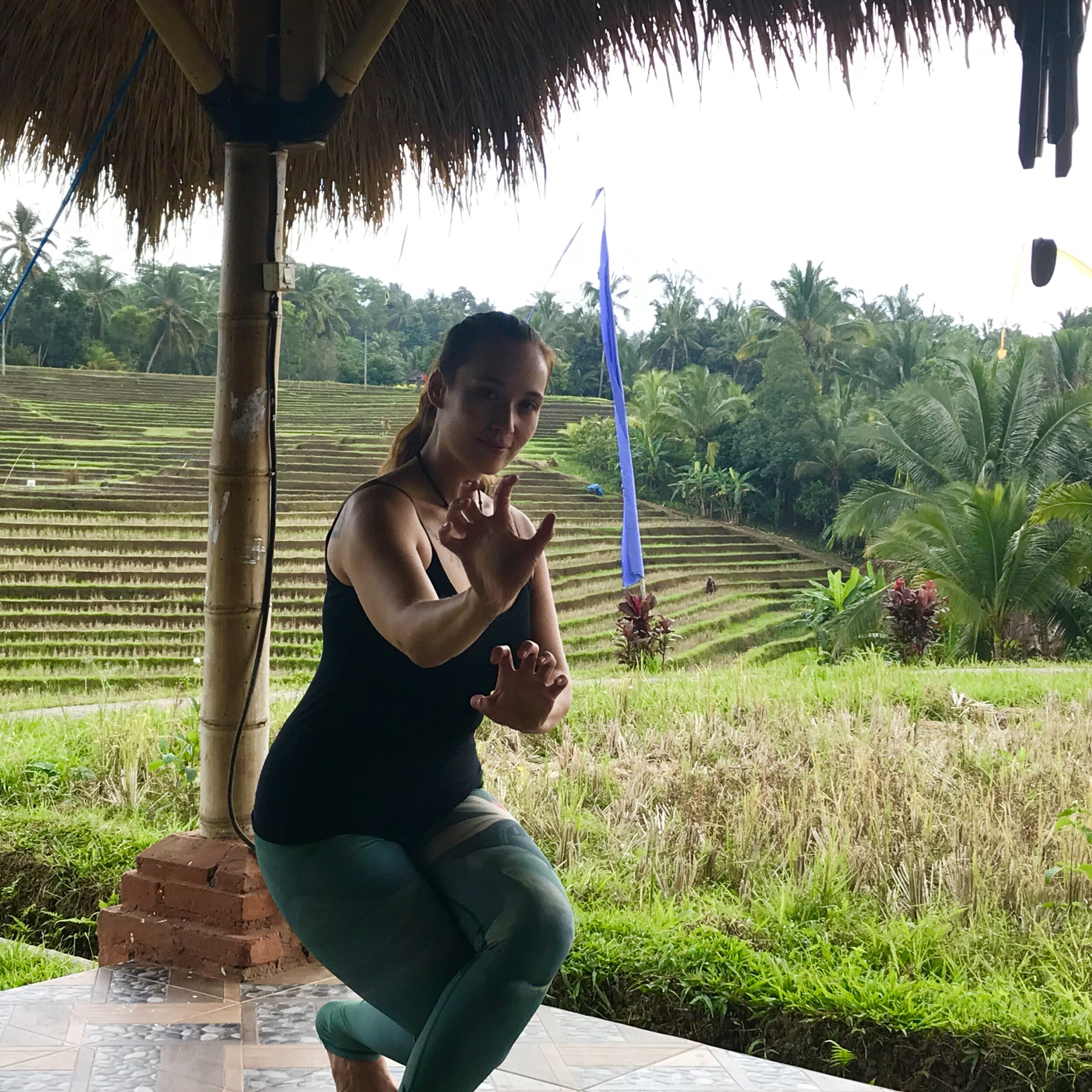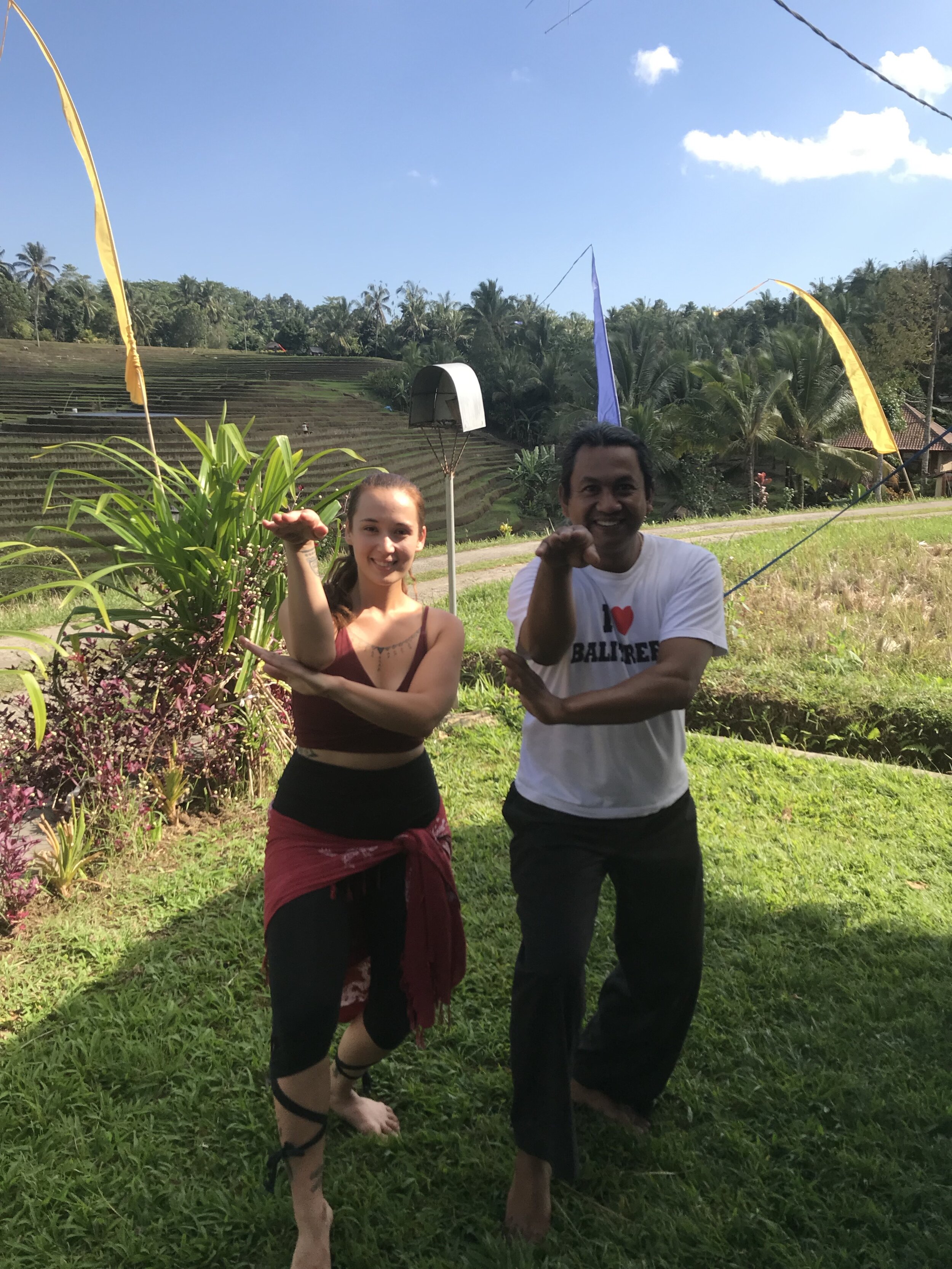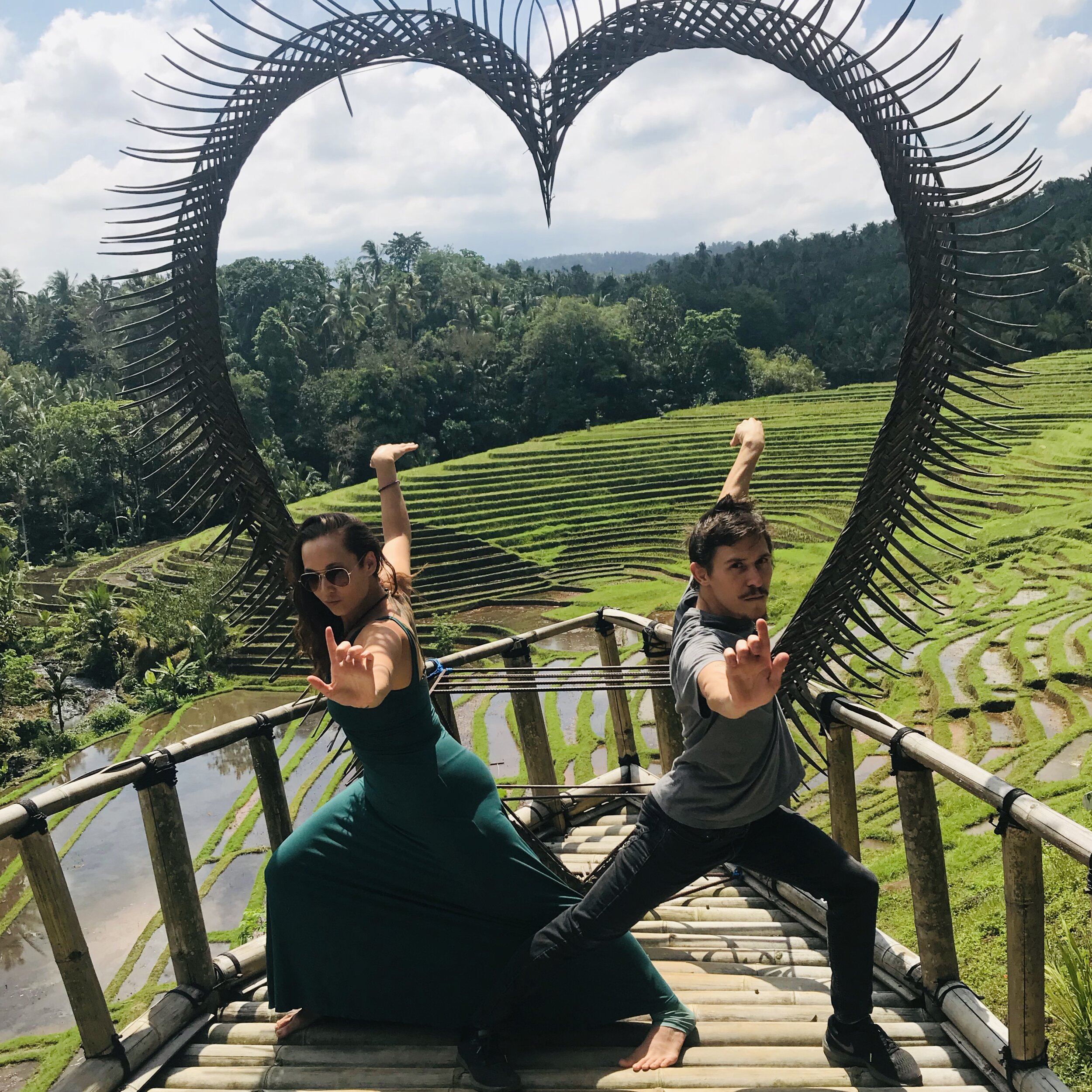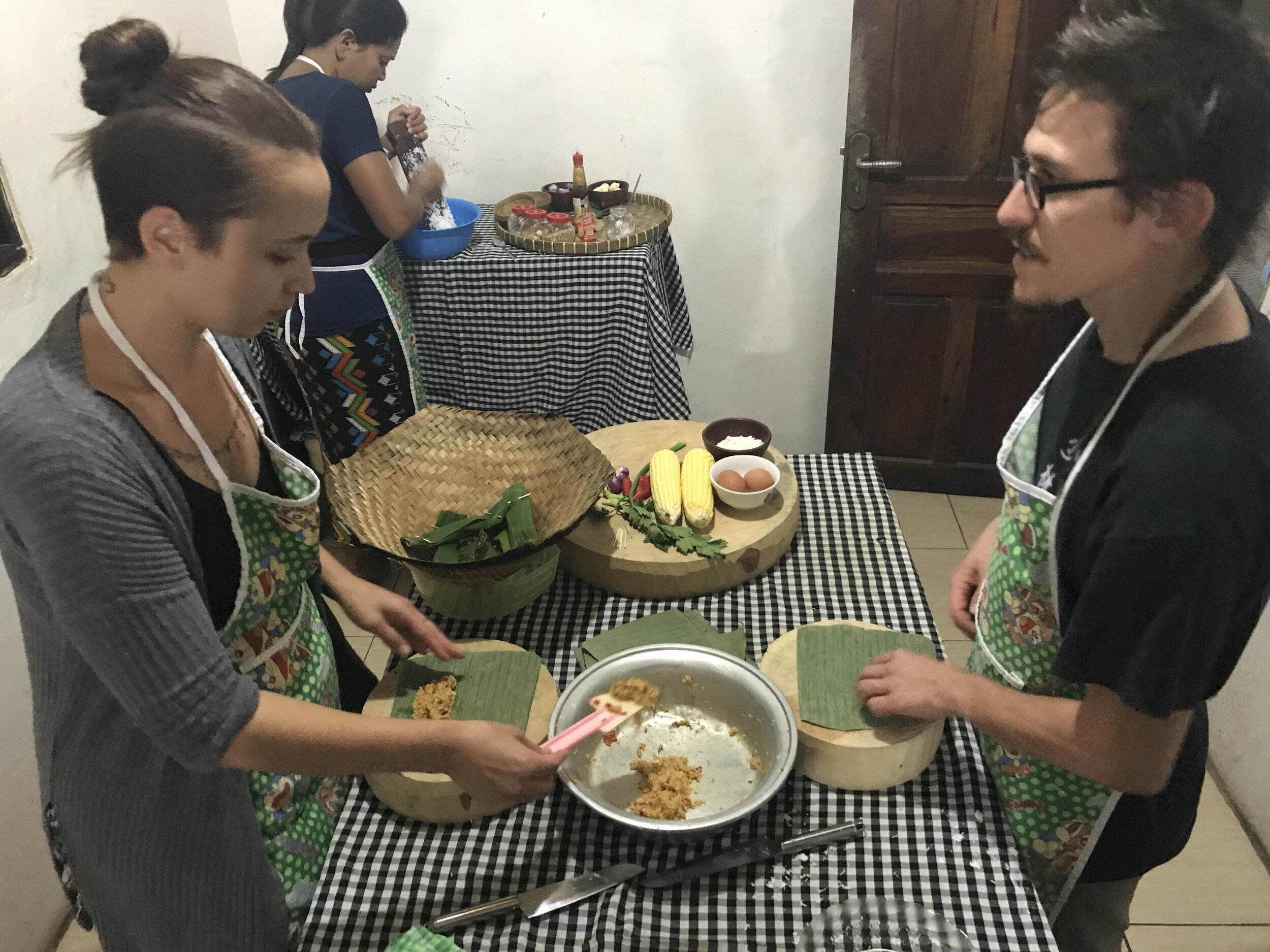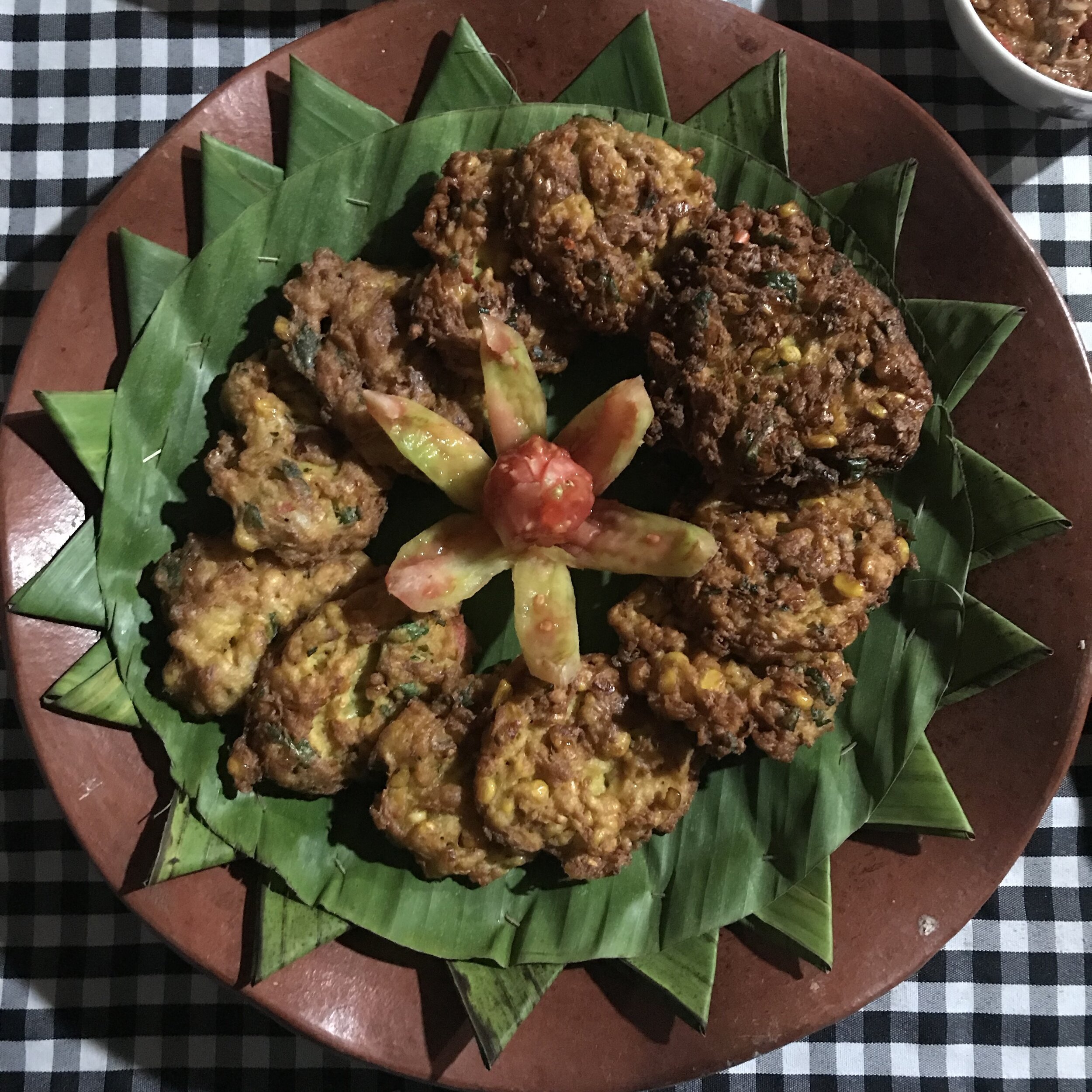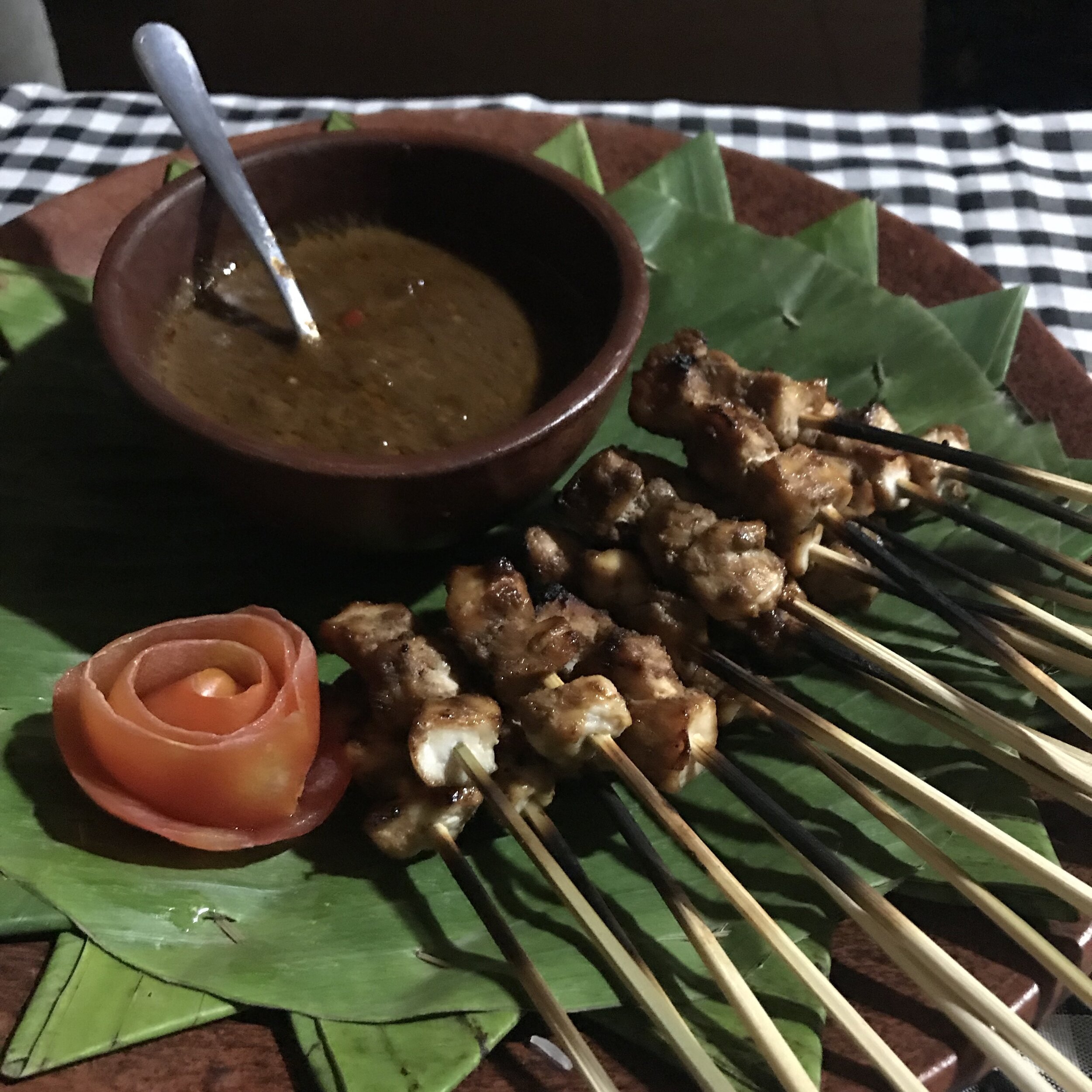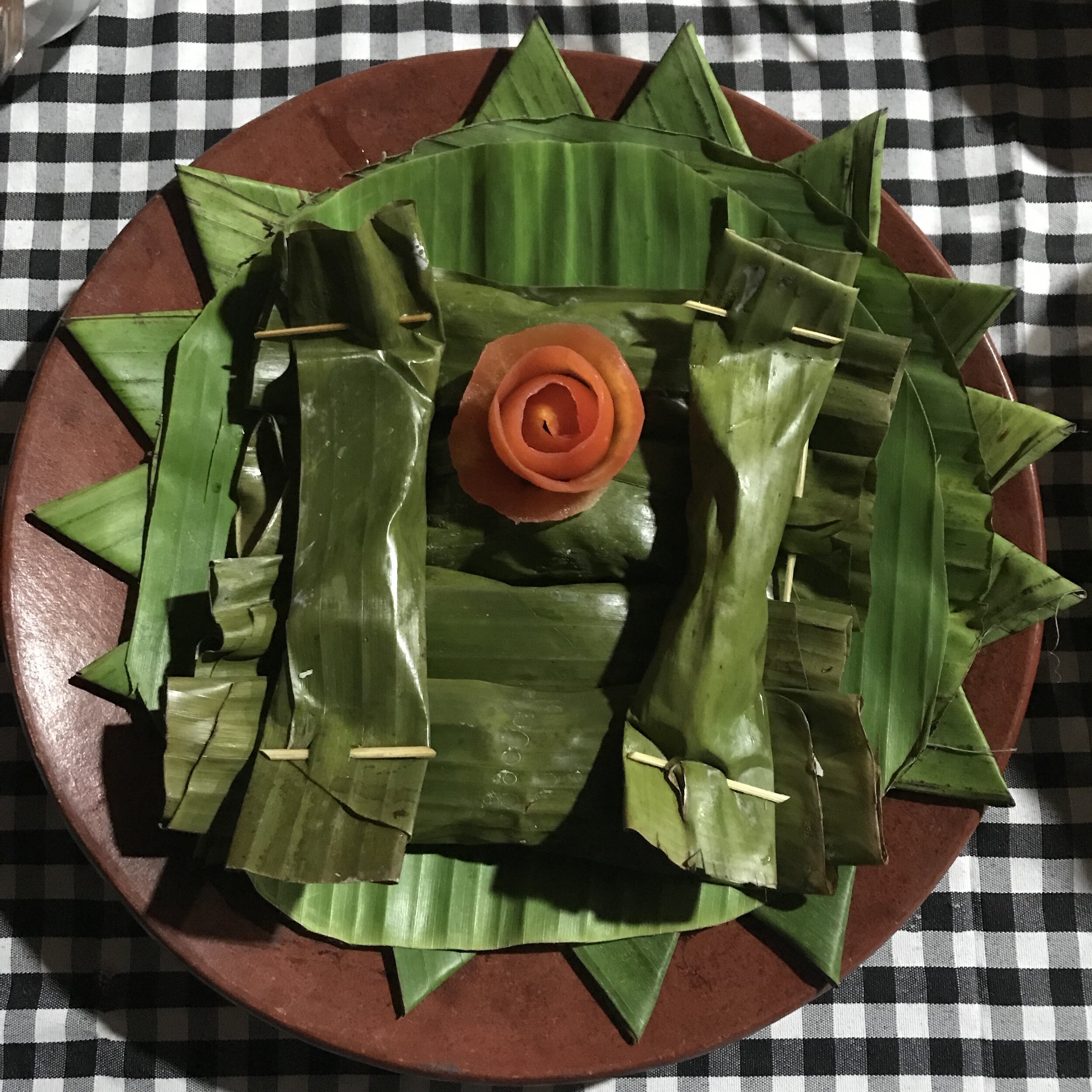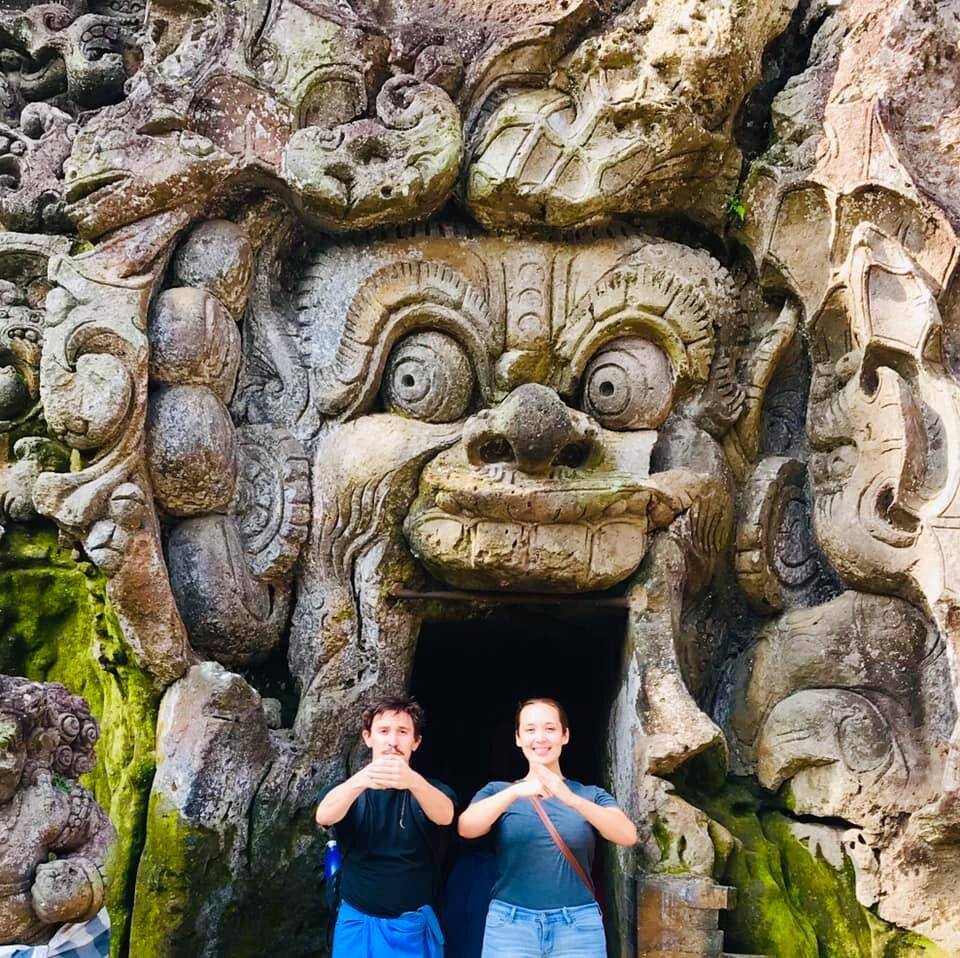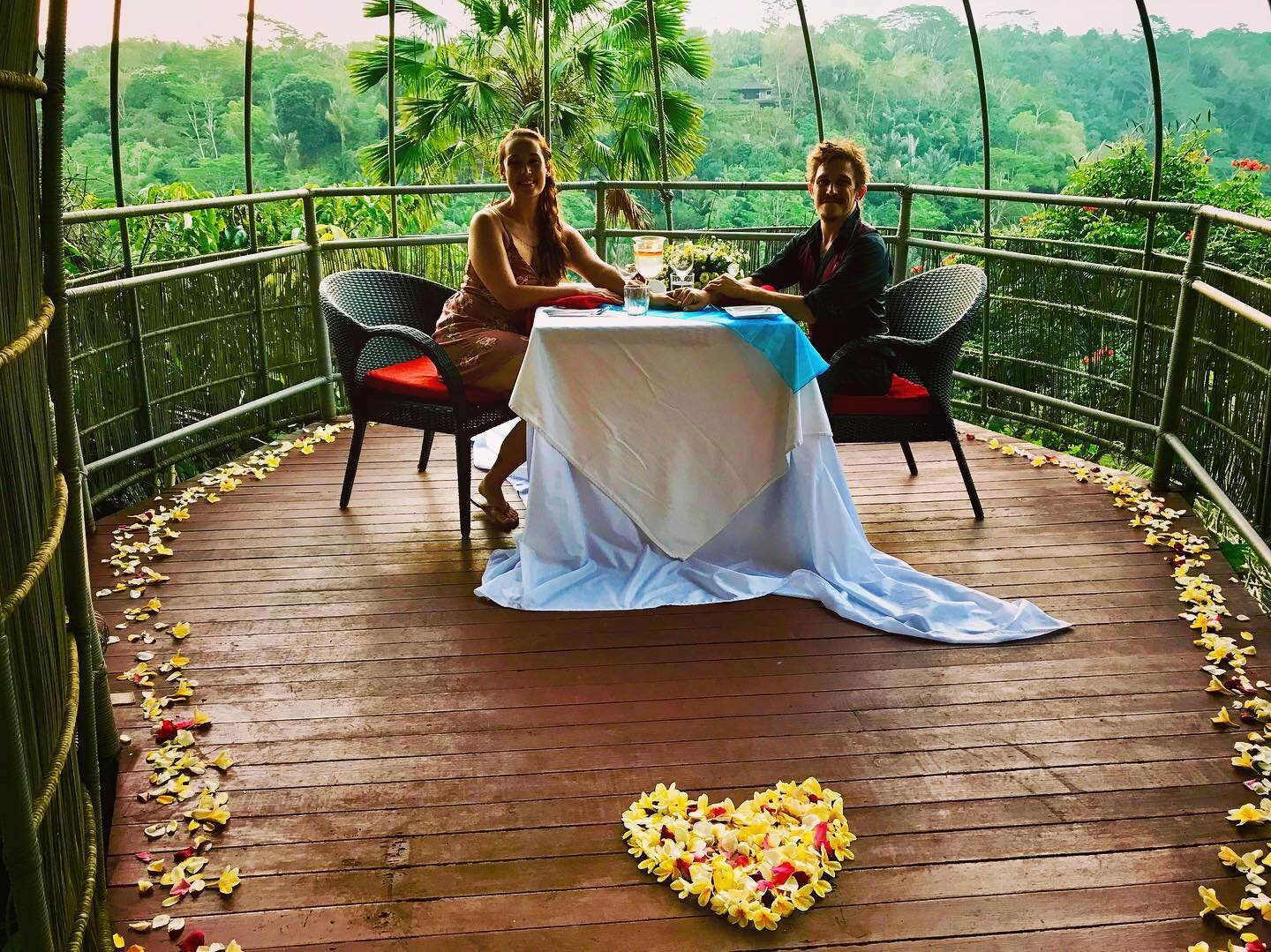The Foodie and Martial Artists Guide to Bali
The spirit of adventure
I almost didn’t go to Bali. To be honest, I thought it was overhyped in the Los Angeles spiritual scene and possibly quite kitschy in an Eat, Pray, Love kind of way. I’m so glad I didn’t let my second and third hand impressions get the best of me. The island of Bali located in the nest of Indonesia truly is a special place. It has its tourist heavy spots and moments, but the people, culture, art, cuisine, and spirit of the island really make Bali a place to behold. As always, my mission was to create a travel itinerary that included martial arts, cultural experiences, food, and adventure so keep reading to find out what I did and pluck some ideas if you happen to plan a trip to the wonderful land of Bali.
The Long Trek
After two days of travel, we arrived at our first destination - Balitrees Retreats. After reading amazing reviews, I scheduled us for seven days of yoga, martial arts training, meditation, cultural activities, and relaxation. Paul and I opted for the cheaper homestay option vs. a private retreat room, and while it was much more “basic,” it was delightful. We stayed with such a nice family in Sesandan Village and had so much more authentic connection with the people. Sesandan is a beautiful, vibrant region of 2,000 people (and dogs, and pigs, and cows, and roosters of course) where, high up in the mountains, the weather was perfect, and the expansive feeling of adventure was omnipotent!
The auspicious significance between Pencak Silat and Kung Fu
Upon arrival, it seemed as though we had attended a retreat more focused on the Balinese practice of Watukaru Yoga. While I was excited to deepen my practice, I really wanted a good taste of Indonesia’s respected martial art - Pencak Silat. It turned out that the owner of Balitrees, Adi, was also a martial arts master of Silat (specifically a snake style master), and he more than accommodated our request to focus on the ancient style. On our very first morning, before the group yoga class, Paul and I were instructed to meet in the outdoor training arena - a beautiful two section platform with hardwood floors and a bamboo roof that overlooked rice fields and that calm hustle of village life. Before beginning our training, Adi explained some Balinese history that soon revealed the close link between Pencak Silat and our original practice of Shaolin Kung Fu. We learned that, at least from their historical reference point, the Indian prince and main channel of Kung Fu, Bodhidharma, traveled through out Asia, spreading Buddhism, martial arts, meditation, and healing. From Adi’s teaching and perspective, Bodhidharma actually started his martial arts quest in Bali, Indonesia, then moved up the Asian countries. He learned 72 animal and elemental styles, 18 classical weapons, and more from the Balinese master Ki Goplo and actually meditated right where we were - Watukaru Mountain, around 540 AD. The striking similarities between animal styles, weapons, and philosophy were so surprising and inspiring. Historical timelines can be blurry, but without a doubt, there is a strong and valid connection between Pencak Silat and Shaolin Kung Fu. We traveled to learn a “new” martial art and instead stumbled upon the possible ancient progenitor of our current art! I had goosebumps every day and it truly felt like an ordained mission. Adi was patient and calm, yet pushed us every day to learn and retain as much of his teachings as possible. We ended up learning three snake forms that were the expression and challenge I was looking for. Not to mention - I’ve always wanted to learn snake style forms of Kung Fu but have been told it is too advanced. I’m so grateful to have gotten just a taste of these powerful, energy cultivating forms, and still work on them regularly. They are truly intangible and invaluable gifts I will always cherish. Paul and I were also surprised and proud to learn that we were his first American students! #Represent
Village Activities
Each day had hours of Silat training, Watukaru yoga, meditation, and great cultural activities such as coconut oil making, waterfall trekking, beach trips, a balinese language class, dance lessons, healing massages, and more. I met so many wonderful people from all over the world and felt like I really connected with the people of Sesandan Heritage and other travelers. Adi, a main teacher and owner of Balitrees, does a lot to economically empower the people of Sesandan, and uses the retreat as an avenue to support the whole village. In a very special conclusion, at the end of our stay, Adi and our other epic teacher Gede, arranged a special trip for just Paul and I. We were taken to their Ashram and martial arts center where they grew up training, and it was such a blessing to walk through their special place of prayer and warrior arts. It was the perfect way to end our trek in Sesandan Village. I had a small ache in my heart upon leaving, a sure sign of a beautiful and memorable trip.
Pilgrimage to Keliki Kawan
Onwards to our next leg of the trip, we headed to Keliki Kawan, a small village not too far from the main hub of Ubud. We found an amazing AirBnb for around $30 a night that was a magical steal. Nestled in the back of our host, Bayu’s, family compound was our little home for next week. Considering our more simple accommodations from the first part of the trip, the fancier upgrade was appreciated! Keliki Kawan is a village of about 800 people, so we still had that down to earth and local experience. Our host Bayu was so generous, helpful, and genuine! His wonderful family who stayed on the compound helped with our every need and we woke up to a fresh breakfast each morning. We walked to the local Warung where Bayu’s cousin ran an awesome kitchen and ate there almost exclusively. Bayu acted as our tour guide on a few occasions, driver, and he even brought us to his villages private new moon ceremony where we dressed up in traditional regalia and celebrated with the town. It was such a pleasant stay in Bali. Be advised that this location is a bit out of the way as far as public transportation goes, so be sure to plan accordingly (or bring good walking shoes).
If you're looking for unique experiences in Ubud, here are a few of my top recommendations!
Take a traditional Balinese Cooking Class: Join Putu and her husband Pasta for an authentic and and informative cooking class! They will pick you up from your Airbnb and drive you to their home in Ubud where you'll learn to make delicious dishes like sweet potato rice, sautéed spicy fermented tofu, chicken skewers, and more. It's a fun way to experience Balinese culture and get some new recipes!
Visit the Genung Kawi Sebatu Water Temple, Goa Gajah Temple “Elephant Cave,” Ubud Monkey Forest, and Fire Chant Dinner and Performance: For an adventure-packed day, explore the Gunung Kawi Sebatu water temple with a local guide and learn about the history and culture surrounding Bali's reverence for water. Then, visit the 11th-century Elephant Cave and temple to observe the history and ancient energy. Be prepared to get your steps in, and after you pay the temple fee, don’t feel pressured to join a “tour guide.” Lastly, a trip to Bali wouldn’t be complete without a stop for a close-up experience with macaque monkeys at the Sacred Monkey Forest where, down the street, you can end your adventure day with a Kecak Fire Dance and dinner show.
Have a luxury dinner at the Birdnest La View - If you're looking for an immaculate and romantic dining experience, consider the Birdnest La View Restaurant in Ubud. This gem of a restaurant is located high up in the trees and offers a stunning ambiance overlooking a lush valley. They serve a delicious five-course meal with options like fresh salmon, seared scallops, char-grilled prime steak, and chocolate lava cake. We enjoyed “Birdnest 1",” but all of the options were alluring. Book well in advance because this place fills up FAST. Great spot for birthdays, proposals, and special occasions.
Take a traditional Batik art class - The last adventure and huge recommendation I’d like to offer is that of the Batik art class. Batik (both a noun and a verb) is a highly regarded and developed art form originating from the islands of Indonesia. It utilizes cloth, dyes, and a special tool called the cantak which one uses to carefully design intricate patterns with boiling wax. Yep, it was definitely intimidating at first. Once you outline your large piece of fabric with wax, you fill it in with vibrant colors, wash and hang it up to dry. To this day, it is my favorite piece of art I have ever made! Paul and I found a local art class in a small neighborhood, so a lot of hands-on instruction was offered and was very helpful. The entire class and experience ran about 6 hours, but I probably would have been done sooner had I chosen a simpler design.



